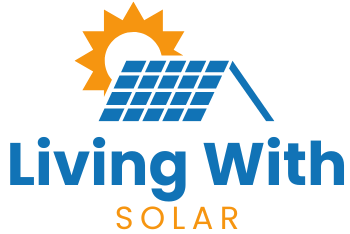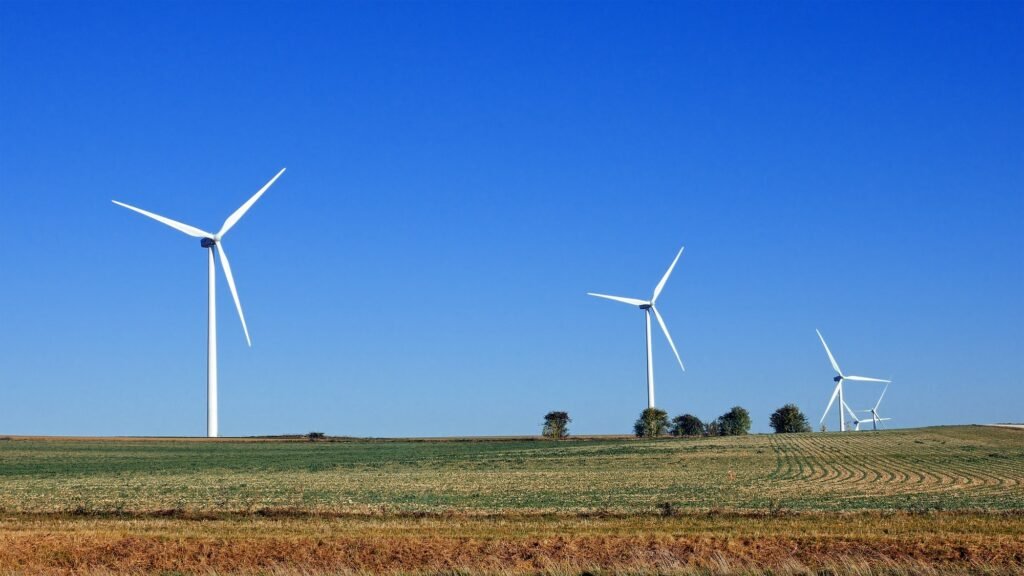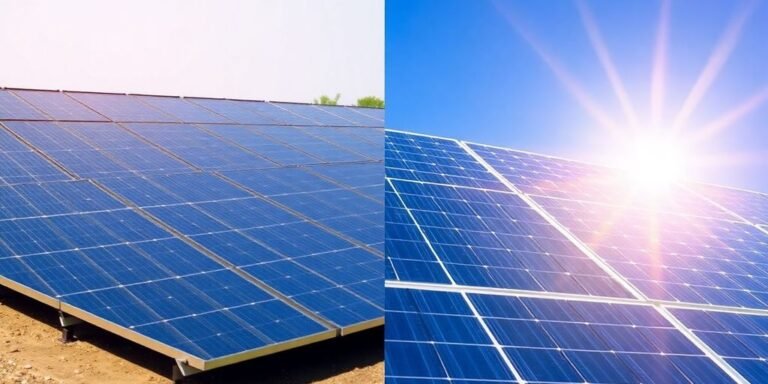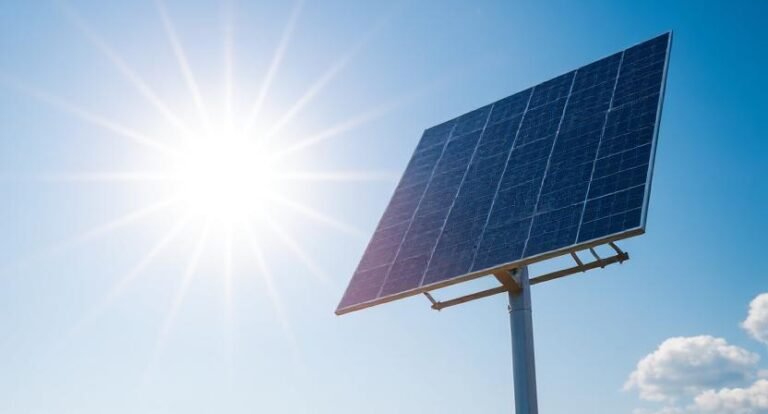How long do solar panels last? This question is almost in everyone’s life these days. Well, you’re not alone. Lots of folks are curious about this because, let’s face it, solar panels aren’t cheap, and you want them to last, right? They say solar panels can last anywhere from 25 to 30 years. But there’s a bit more to it. Different factors can affect how long they’ll keep working efficiently. Let’s break it down and see what you can do to make the most of your solar investment.
Key Takeaways
- Solar panels typically last between 25 to 30 years, but their efficiency decreases over time.
- Regular maintenance can help extend the lifespan of your solar panels.
- Degradation rates affect how much energy your panels can produce as they age.
- Choosing a reputable installer and high-quality panels can make a big difference.
- Warranties usually cover 25 years, providing a good indication of expected lifespan.
If you want to know more about solar panels. Visit our site
Understanding the Lifespan of Solar Panels
Factors Influencing Solar Panel Longevity
Solar panels are pretty sturdy, but their lifespan can be influenced by a bunch of factors. Quality of materials is a big one. High-grade materials ensure panels withstand harsh weather, like hail or high winds.
Then there’s the environment. Panels in sunny, mild climates generally last longer than those in extreme conditions. Maintenance matters too.
Regular cleaning and inspections can prevent minor issues from becoming big problems.
Typical Lifespan Expectations
Most solar panels are expected to last between 25 to 30 years. But here’s the thing: they don’t just stop working after that. They just produce less electricity.
A panel might still be chugging along at 80% efficiency after 25 years. Some modern monocrystalline solar panels even stretch their lifespan to 30-40 years.
It’s not just about age, though. It’s about how much energy they can still produce.
Comparing Different Solar Panel Brands
Not all solar panels are created equal. Different brands offer different longevity and performance. Here’s a quick comparison of some popular ones:
| Brand | Warranty (Years) | Degradation Rate |
|---|---|---|
| Maxeon | 40 | 0.25% |
| REC Group | 25 | 0.25% |
| Panasonic | 25 | 0.25% |
| Silfab Solar | 30 | 0.30% |
| Q CELLS | 30 | 0.50% |
Choosing a brand often comes down to balancing cost with expected performance and longevity. Some folks might opt for a pricier panel with a better warranty, while others might prioritize initial savings.
Solar panels are a long-term investment, and understanding their lifespan can help you make informed choices about your energy needs.
Whether you’re looking to save on energy bills or reduce your carbon footprint, knowing what to expect from your solar panels is key.
Degradation Rates and Their Impact on Solar Panel Performance
What is Solar Panel Degradation?
Solar panel degradation refers to the gradual decline in a panel’s ability to produce electricity over time. This isn’t about panels suddenly breaking down; rather, it’s a slow process where efficiency drops bit by bit.
Every solar panel experiences this, but the rate can vary. Factors like weather, quality of materials, and manufacturing processes all play a role.
Degradation is a natural part of a solar panel’s life cycle, and understanding it helps in planning for long-term energy needs.
Average Degradation Rates
Typically, solar panels degrade at a rate of about 0.5% to 0.8% per year. This means that after 20 years, a panel might operate at around 90% of its original capacity.
Some premium panels, known for their superior quality, degrade at even lower rates, sometimes as low as 0.3% annually. Here’s a quick look at how different degradation rates affect performance:
| Year | 0.3% Rate | 0.5% Rate | 0.8% Rate |
|---|---|---|---|
| 1 | 99.7% | 99.5% | 99.2% |
| 10 | 97.0% | 95.1% | 92.0% |
| 20 | 94.1% | 90.5% | 84.3% |
| 25 | 92.5% | 88.0% | 82.0% |
How Degradation Affects Energy Output
As panels degrade, their energy output decreases. This doesn’t mean they stop working; they just produce less electricity.
For homeowners, this could mean slightly higher electricity bills as the panels age, especially if they were sized to meet exact energy needs.
To mitigate this, some folks opt for panels with lower degradation rates or plan for a bit more capacity right from the start.
While solar panels do lose efficiency over time, they still offer a reliable source of energy for decades. Planning for degradation can ensure that energy needs are met without unexpected surprises.
Maximizing the Lifespan of Your Solar Panels
Importance of Regular Maintenance
Regular maintenance is key to ensuring your solar panels perform at their best for as long as possible. Cleaning your panels regularly helps prevent dirt and debris from blocking sunlight.
Depending on your location, this might mean brushing off snow or rinsing away dust and grime. Besides cleaning, it’s crucial to inspect your panels for any signs of damage, like cracks or loose connections.
Regular check-ups can catch small issues before they become major problems, potentially saving you from costly repairs.
- Clean panels at least twice a year.
- Inspect for damage after severe weather events.
- Check connections and wiring periodically.
Choosing the Right Installer
The installer you choose can make a big difference in how long your solar panels last. Opt for a reputable company with a track record of quality installations.
A good installer will not only ensure your panels are set up correctly but also provide guidance on maintaining your system. They should offer a solid labor warranty and be available for any follow-up services you might need.
- Research installers thoroughly.
- Ask about warranties and post-installation support.
- Consider customer reviews and testimonials.
Monitoring Solar Panel Performance
Keeping an eye on your solar panel’s performance is another way to maximize their lifespan. Monitoring systems can alert you to drops in performance, which might indicate a problem.
This could be as simple as a switch being turned off or something more complex like an electrical fault.
By catching these issues early, you can address them before they lead to more significant damage.
- Install a monitoring system to track performance.
- Check system notifications regularly.
- Act promptly on alerts to prevent further issues.
Keeping your solar panels in top shape isn’t just about extending their life; it’s about getting the most out of your investment.
A little effort in maintenance and monitoring goes a long way in ensuring your solar system continues to work efficiently for years to come.
For more insights on maximizing solar panel lifespan, consider regular cleaning, damage inspection, and addressing issues promptly.
The Role of Warranties in Solar Panel Longevity

Understanding Solar Panel Warranties
Solar panel warranties are like a safety net for your investment. They generally cover two main areas: equipment and performance.
The equipment warranty is a promise against manufacturing defects, while the performance warranty guarantees that your panels will still produce a certain percentage of power over time.
These warranties ensure that your panels will last their entire life, often up to 25 years or more.
How Warranties Protect Your Investment
Warranties can save you a lot of headaches and money. If something goes wrong with your panels, like a drop in performance or a manufacturing defect, a good warranty will cover the cost of repairs or replacements.
This means you won’t be left footing the bill for something that wasn’t your fault. Some warranties even cover labor costs for repairs, which can be a big relief.
Top Manufacturers and Their Warranty Offers
Different manufacturers offer different warranty terms. Here’s a quick look at what some of the top brands offer:
| Manufacturer | Equipment Warranty | Performance Warranty |
|---|---|---|
| Maxeon | 40 years | 92% output at year 25 |
| REC Group | 25 years | 92% output at year 25 |
| Panasonic | 25 years | 92% output at year 25 |
| Silfab Solar | 30 years | 90.8% output at year 25 |
| Q CELLS | 30 years | 86% output at year 25 |
Warranties are more than just paperwork; they are a promise that your solar panels will continue to perform and save you money for years to come.
Having a solid warranty can give you peace of mind, knowing that your investment is protected. It’s always a good idea to read the fine print and understand what is covered and for how long.
This way, you can enjoy the benefits of solar energy without worrying about unexpected costs.
End-of-Life Options for Solar Panels
Recycling and Reusing Solar Panels
When solar panels reach the end of their useful life, there are several paths they can take. Recycling is becoming a major focus as the number of decommissioned panels grows.
The materials in solar panels, like glass and certain metals, can be recycled and reused in new panels or other products.
However, the recycling process is still evolving, and while it’s promising, it’s not yet as widespread as it needs to be.
Another option is reusing or refurbishing panels for less demanding applications, extending their life beyond their initial purpose.
Environmental Impact of Solar Panel Disposal
Disposing of solar panels improperly can have significant environmental consequences. If panels end up in landfills, harmful substances can leach into the soil and water. This is why recycling is so important.
It not only recovers valuable materials but also reduces the environmental footprint of solar energy. As awareness grows, more efforts are being made to create sustainable disposal methods that minimize harm to the planet.
Innovations in Solar Panel End-of-Life Management
The industry is seeing exciting innovations aimed at improving how we manage solar panels at the end of their life.
Companies are developing panels that are easier to recycle, and new technologies are emerging to make the recycling process more efficient and less costly.
In some regions, regulations are being implemented to ensure that panels are disposed of responsibly.
These advancements are crucial as the number of panels reaching the end of their life is expected to surge in the coming years.
The future of solar energy depends not just on how we harness the sun, but also on how we handle the technology when it’s no longer useful.
With growing attention to recycling and innovative disposal methods, the solar industry is taking steps to ensure a sustainable energy future.
Common Issues Affecting Solar Panel Lifespan
Impact of Weather and Natural Disasters
Weather can be both a friend and foe to solar panels. While panels are designed to withstand various weather conditions, extreme weather events can still pose significant risks.
Heavy snowfalls can cover panels, blocking sunlight and reducing efficiency.
Snow can also add weight and pressure, leading to potential physical damage. Hailstorms are another concern, as they can crack panels, although most are tested for hail resistance.
Strong winds can cause panels to flex, creating microcracks that reduce output over time.
Electrical Component Failures
Solar panels themselves are quite durable, but the accompanying electrical components can be more vulnerable.
Inverters, which convert the direct current (DC) generated by the panels into alternating current (AC) for home use, are common points of failure.
These components can often be replaced without needing to access the panels themselves. Additionally, wiring and other electrical parts may degrade over time, leading to reduced efficiency or system failures.
Preventive Measures to Extend Lifespan
To maximize the lifespan of solar panels, regular maintenance is key. Here are a few steps you can take:
- Routine Inspections: Have a professional check your system periodically to catch any issues early.
- Cleaning: Dirt and debris can accumulate on the panels, so clean them gently with water or a soft brush.
- Monitor Performance: Use apps or monitoring systems to keep an eye on your solar output and catch any anomalies quickly.
Taking proactive steps in maintaining your solar panels not only boosts their efficiency but also extends their lifespan, ensuring you get the most out of your investment.
Technological Advances in Solar Panel Durability
New Materials and Designs
Solar panel technology is always evolving, and one of the most exciting areas is the use of new materials and designs.
Researchers are experimenting with alternatives to traditional silicon, like perovskite, which offers high efficiency and flexibility.
These new materials are not only more efficient but also potentially cheaper. Innovative designs are also being developed to better withstand environmental stresses, such as hail or strong winds, ensuring a longer lifespan.
Improvements in Degradation Rates
Degradation is a natural part of a solar panel’s life, but advancements are being made to slow this process.
Manufacturers are now using PID-resistant materials that help reduce degradation caused by electrical imbalances.
The average annual degradation rate has been improved from about 0.5% to as low as 0.3% in some high-quality panels.
This means panels can maintain a higher output over a longer period, maximizing their efficiency.
Future Trends in Solar Panel Technology
Looking ahead, the future of solar panels seems bright. We might see panels that are not only more efficient but also integrated into everyday materials, like windows or roof tiles.
This integration could revolutionize how we think about solar energy, making it a seamless part of building design.
Additionally, advancements in AI and IoT could lead to smarter solar systems that optimize energy production and consumption in real-time.
As technology progresses, solar panels are becoming more than just a tool for energy production.
They’re evolving into a sophisticated system that adapts to our needs and the environment, promising a future where renewable energy is more accessible and efficient than ever before.
Conclusion
So, there you have it. Solar panels are built to last, usually around 25 to 30 years, which is pretty impressive. They do lose a bit of their power over time, but not enough to worry about for a couple of decades. If you’re thinking about going solar, just remember to keep an eye on their output and maybe give them a clean now and then. And hey, even after their prime, they can still generate some juice. It’s all about getting the most out of them while they’re up there on your roof. So, go ahead and soak up that sun!
Frequently Asked Questions
How long do solar panels usually last?
Solar panels typically last between 25 to 30 years. They can still produce electricity after that, but their efficiency might drop, making it a good time to consider replacements.
What affects the lifespan of solar panels?
The lifespan of solar panels can be influenced by factors like climate, the type of solar panels, and how they are installed and maintained.
How fast do solar panels lose efficiency?
Solar panels generally lose about 0.5% of their efficiency each year. This means after 20 years, they might still work at around 90% of their original capacity.
Can solar panels be used after their lifespan ends?
Yes, even after their expected lifespan of 25 to 30 years, solar panels can still generate electricity, though at a reduced rate.
What should I do to make my solar panels last longer?
To extend the life of your solar panels, ensure regular maintenance, choose a good installer, and keep an eye on their performance.
What happens to solar panels after they are no longer useful?
When solar panels are no longer efficient, they can often be recycled or reused. Some parts can be refurbished to continue generating power.





